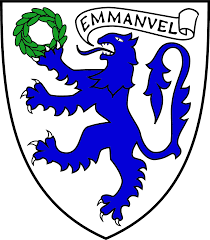Transcription project “Tackling Pandemics in Early Modern Japan” launched in place of the Seventh Summer school in Japanese Early Modern Palaeography is now in its third month and it has received interest in different fora.
Read more in the first instalment of our invited contribution to Teach311 + COVID-19 Collective, which works in collaboration with the Max Planck Institute for the History of Science among other institutions.
Read also the article that has recently appear in the Yomiuri Shimbun, one of the five national newspapers in Japan.
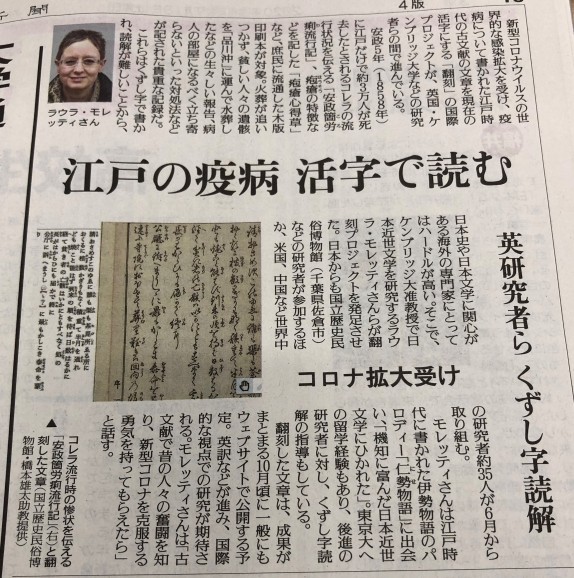
2020年7月18日 読売新聞 (Courtesy of Yomiuri Shimbun)
We would like to renew our gratitude to our generous sponsors who are supporting and endorsing the transcription project. Many thanks also to the members of the PMJS mailing list. The recent dialogue around pandemics in premodern Japan has played significant role in inspiring this project.
![oushu_02[2]](https://wakancambridge.files.wordpress.com/2018/08/oushu_022.jpg?w=1152)

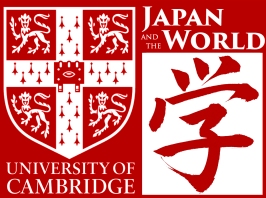
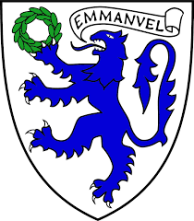
————————————–
Update 30 April 2020
In light of the ongoing Covid-19 crisis and the many uncertainties surrounding international travels for the months to come, the Seventh Summer School in Japanese Early Modern Palaeography has been cancelled for this year and postponed to August 2021. It was by no means an easy decision, but our priority is the safety and wellbeing of all the participants.
Over the next months we intend to foster engagement with early modern sources by launching the transcription project titles “Tacking Pandemics in Early Modern Japan”.
“TACKLING PANDEMICS IN EARLY MODERN JAPAN”
TRANSCRIPTION PROJECT IN COLLABORATION WITH みんなで翻刻
Organized in collaboration with Prof Hashimoto Yuta (National Museum of Japanese History) and using the AI platform Minna de honkoku みんなで翻刻, the project aims at transcribing a conspicuous number of early modern books and ephemera dealing with smallpox, cholera, and measles. The transcriptions will be disseminated publicly once the project is concluded and the hope is that they will inspire more research on the study of pandemics in early modern Japan.
The core of the transcription project will be supplemented by a number of activities:
– Videos introducing hentaigana and kusuzhiji to total beginners.
– Video-interviews with scholars working on the topic of pandemic in the Edo period.
– A parallel project led by Prof Yamabe Susumu and focussed on sources written in kanbun kundoku.
At the end of the project we will also ask the participants to reflect on the pedagogical merits of learning hentaigana and kuzushiji with the aid of Artificial Intelligence.
In principle the project is open to those who had been admitted to the Seventh Summer School in Japanese Early Modern Palaeography. Anyone particularly interested in taking part in the project is invited write to Dr Laura Moretti (lm571@cam.ac.uk).
On our regular Summer School:
The Summer School in Japanese Early Modern Palaeography at the University of Cambridge is a unique programme that teaches how to decode Japanese early modern archival materials. Find out more by watching this video.
Transcription Project
Tackling Pandemics in Early Modern Japan
Welcome to the transcription project “Tackling Pandemics in Early Modern Japan” that we are running in collaboration with Prof Hashimoto Yuta (National Museum of Japanese History) and using the Artificial Intelligence platform Minna de honkoku みんなで翻刻.
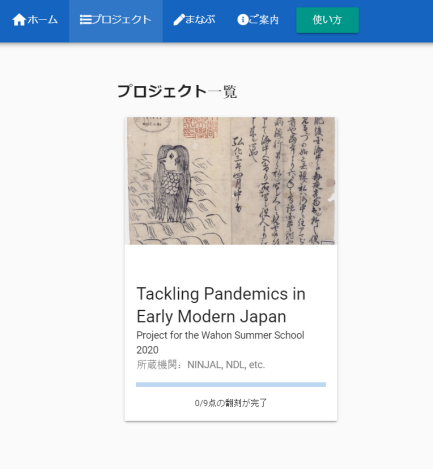
If you have signed up for the project please click here.
We would like to thank our sponsors:
![oushu_02[2]](https://wakancambridge.files.wordpress.com/2018/08/oushu_022.jpg?w=622&h=149)



The project has been devised for those who had applied and were selected for the seventh Summer School in Japanese Early Modern Palaeography. But we can accommodate a few more participants at this stage. If you are interested and want to sign up, please send an email to Dr Laura Moretti: lm571@cam.ac.uk.
Sorry, the project has now reached max capacity.
———————————–
The project requires previous knowledge of hentaigana and kuzushiji.
The project will start on 1 June 2020 and end on 31 October 2020. Once the project is complete, we will release the results publicly.
Why this project now?
As the current Covid-19 pandemic has shown, human beings are confronted with devastating pandemics. This is true throughout the centuries. Reading about how people dealt with the horror and the trauma caused by pandemics in the past can help finding ways to tackle similar challenges in the 21st century.
The burgeoning printing industry of early modern Japan gave life to an impressive amount of books and ephemera that talk about different epidemics, including measles, smallpox and cholera. Yet, most of these materials are not available in transcription and are therefore accessible to a few specialists who can read the Japanese early modern cursive hand. This project trains a young generation of scholars to decode, read, and analyse such materials. It also makes resources in transcription available to students and scholars who have no training in palaeography.
Exploring the potential of artificial intelligence
Thanks to the collaboration with Prof Hashimoto Yuta, the project will reflect critically on the use of artificial intelligence as a tool to assist in the study of the palaeographic skills needed to read Japanese early modern materials. At the same time, the data generated by the project will be employed to further enhance the effectiveness of artificial intelligence.
Learn more by watching this interview with Prof Hashimoto Yuta:
Materials to be transcribed
Here is a list of materials that we will be using. Please note that new materials may be added as the project develops. We would like to thank the National Institute of Japanese Literature and the National Diet Library for making the images free to use.
We will also use:
Four hashika-e from the Victoria and Albert Museum, London.
© Victoria and Albert Museum, London
A few items from private collections in the UK.
© Ebi Bunko
© Suzuran Bunko
Some of these materials were acquired from and donated by Jonathan Hill Bookseller. Learn more by watching this interview:
Video realized by Tessa Rizzoli







